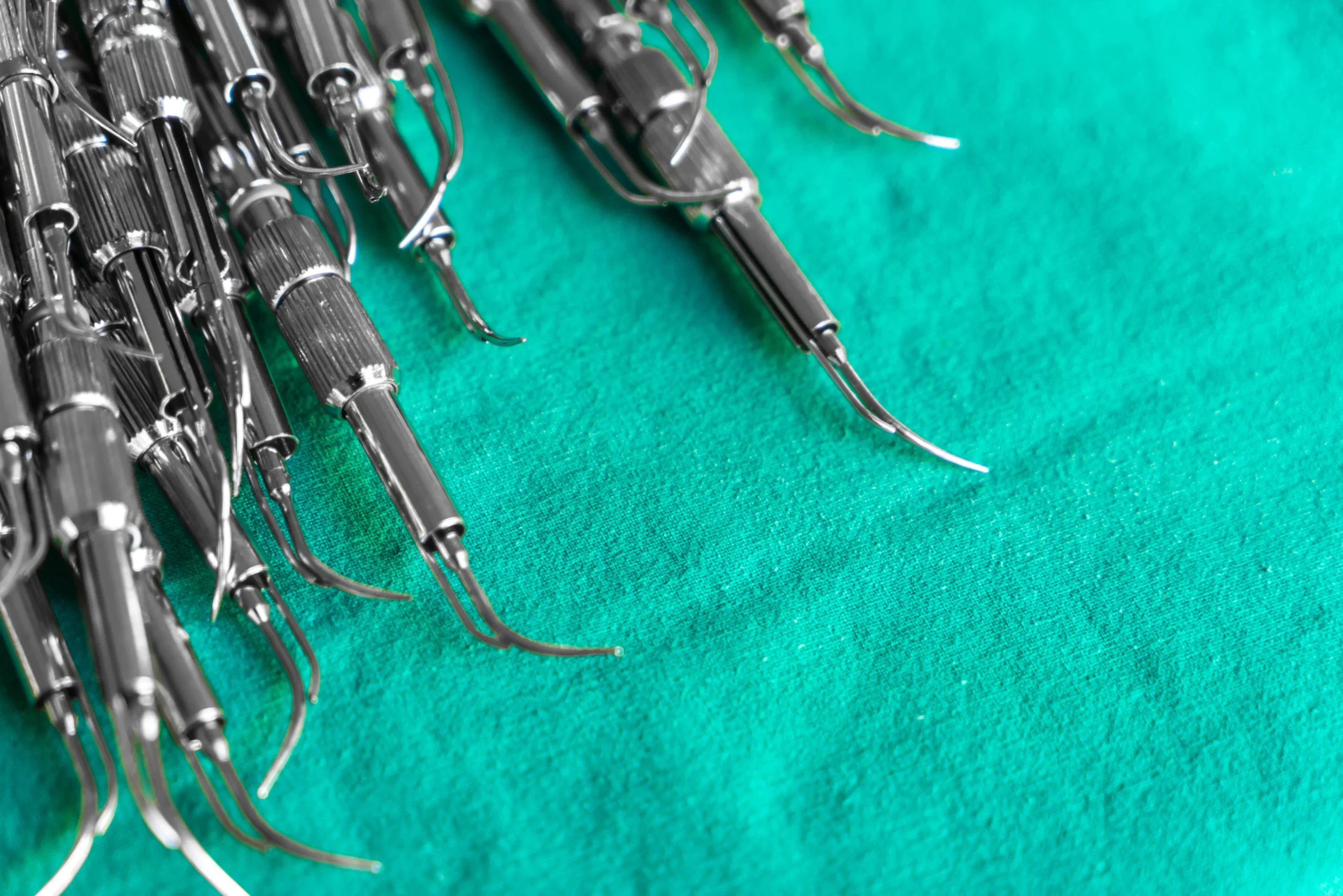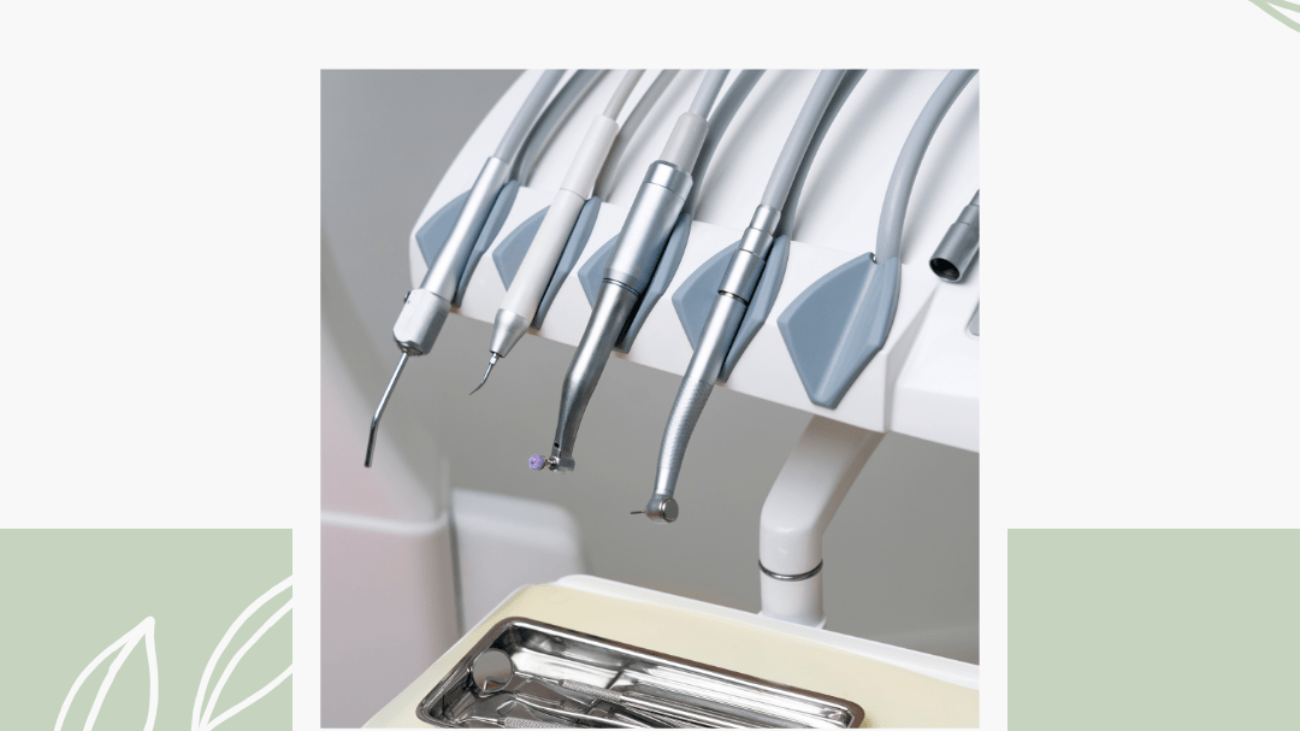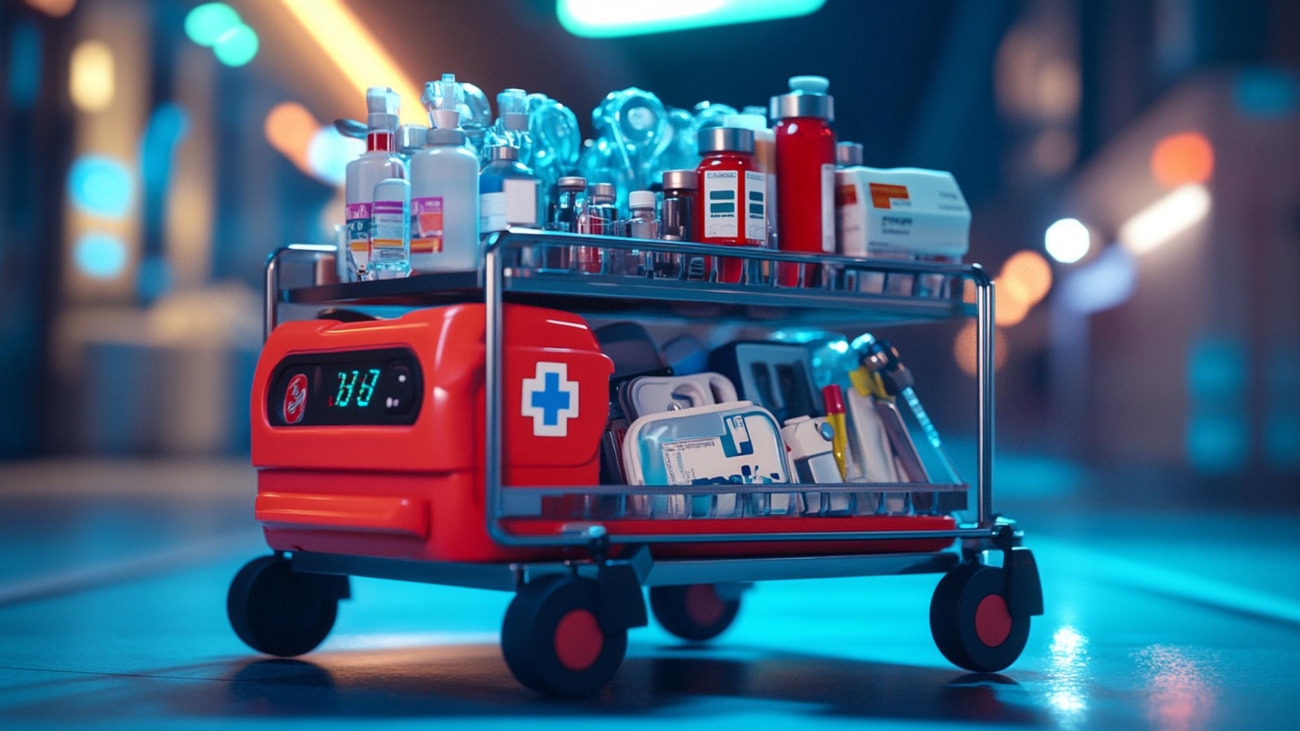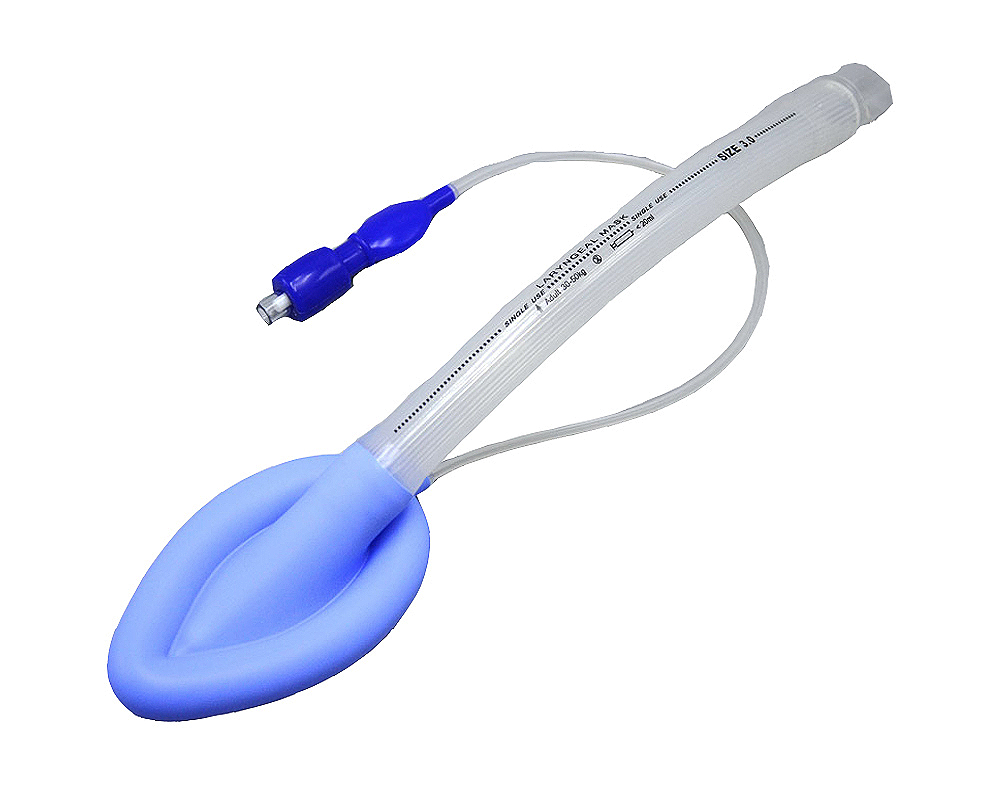Introduction
The emergency trolley is the black box of rescue in critical situations. It contains a collection of medicines, equipment and medical instruments that are vital to saving the lives of patients in emergency situations. The medicines in the emergency trolley deal with a wide range of diseases and disorders and help the medical staff to provide the fastest and most effective treatment to the patients.
In this article, we intend to comprehensively review the medications available in the emergency trolley, their uses, mechanism of action, and important points in their use. Join us to learn more about these life-saving medications.
General introduction of emergency trolley
An emergency trolley is a wheeled cart or cart that holds all the equipment and medications needed to provide basic and advanced care at emergency scenes. This equipment helps nurses and emergency technicians to quickly and effectively treat patients in critical situations.
The importance of standardizing equipment and drugs:
- Ease of use: Standardization of equipment and medications helps emergency personnel treat patients more quickly and accurately.
- Error reduction: Standardization reduces human error and improves the quality of medical care.
- Efficiency increase: With standardization, equipment and medications can be easily replaced and managed.
Role of emergency nurses and technicians:
Nurses and emergency technicians play a very important role in the correct use of the emergency trolley. They must be well-versed in the types of medications, dosages, side effects, and how to administer them. They must also be able to make quick and correct decisions in stressful situations.
Emergency trolley drug categories
The medications in the emergency trolley are divided into different groups based on their use and mechanism of action. Some of the most important of these groups are:
Cardiovascular drugs:
- Epinephrine (adrenaline): One of the most important emergency drugs used in cardiopulmonary resuscitation and anaphylactic shock.
- Lidocaine: Used to control cardiac arrhythmias (irregular heartbeat).
- Amiodarone: Another drug used to treat cardiac arrhythmias.
- Nitroglycerin: Used to reduce chest pain caused by angina and to lower blood pressure.
Respiratory medications:
These medications are used to treat respiratory problems such as asthma, bronchitis, and pulmonary edema. Some of the most important respiratory medications in the emergency trolley include:
- Salbutamol: A short-acting beta-2 agonist bronchodilator used to dilate the airways and relieve shortness of breath.
- Atropine: This medication is used to treat bradycardia (slow heart rate) and increased heart rate. It is also used in poisoning with cholinergic toxins.
- Oxygen: Oxygen therapy is one of the main methods of treating breathing problems and is used in many emergency situations.
Painkillers and sedatives:
- Morphine: A strong narcotic used to relieve severe pain.
- Diazepam: A benzodiazepine used to reduce anxiety, seizures, and muscle spasms.
Other medications:
- Antihistamines: Used to treat allergic reactions such as hives and swelling.
- Corticosteroids: Used to reduce inflammation and suppress the immune system.
- Anticoagulants: Used to prevent blood clots and treat pulmonary embolism.
Part Three: How to Use Emergency Trolley Medications
The use of emergency trolley medications requires sufficient knowledge and skill. Nurses and emergency technicians must be well-versed in the principles of drug administration, dosage calculation, side effects, and drug interactions.
General steps for administering medication:
- Accurate diagnosis: Correct diagnosis of the disease and the patient’s condition is the first and most important step in prescribing medication.
- Drug selection: According to the diagnosis, the appropriate drug is selected.
- Dosage calculation: The drug dose is calculated according to the patient’s weight, age, and clinical condition.
- Route of administration: Drugs can be administered intravenously, intramuscularly, subcutaneously, or intratracheally.
- Patient monitoring: After medication is administered, the patient should be carefully monitored so that any side effects can be quickly identified and treated.
Possible side effects:
Any medication can have side effects. Some common side effects of emergency triage medications include:
- Allergic reactions
- Low blood pressure
- Increased heart rate
- Nausea and vomiting
- Drowsiness
Part Four: Maintenance and Care of Emergency Trolley Medicines
Proper storage of emergency trolley medications is very important. Medications should be stored at the appropriate temperature, away from direct light and moisture. Also, medication expiration dates should be checked regularly and expired medications should be removed from the trolley.
Registration and documentation:
Accurate and complete recording of information regarding medications taken, dosage, time of administration, and patient response to treatment is of utmost importance. This information is very useful for evaluating the effectiveness of treatment and improving the quality of medical care.
Personnel training:
Emergency personnel should receive regular training on emergency trolley medications, how to use them, and precautions.
The importance of training emergency personnel
Continuous training and updating of emergency personnel’s knowledge in the field of emergency trolley drugs is of great importance because:
- Error Reduction: With proper training, the likelihood of medication errors is minimized.
- Increased efficiency: Trained personnel can provide faster and more accurate patient care.
- Knowledge Update: Given scientific and pharmaceutical advances, continuous training is essential.
Educational topics include the following:
- Pharmacology of drugs: Understanding the mechanism of action, side effects, drug interactions and contraindications
- Administration methods: Teaching different methods of drug administration, dose calculation and post-administration care
- Emergency management: Teaching how to manage severe side effects and emergency situations
- Equipment familiarity: Teaching how to use the medical equipment available in the emergency trolley
Global standards for emergency trolley equipment and drugs
To ensure the quality of emergency services and patient safety, global standards have been developed for emergency trolley equipment and drugs. These standards include the following:
- Essential Medicine List: Establish a list of essential medicines that should be in every emergency trolley.
- Storage Conditions: Establish appropriate conditions for storing medicines, including temperature, humidity and light.
- Expiration Period: Establish the period of time allowed for the use of medicines.
- Packaging: Determine the type of packaging and labeling of medications.
- Periodic Inspection: Conduct periodic inspections of emergency trolley equipment and medications.
The future of emergency trolley drugs
As technology and medical knowledge advances, emergency trolley medications are expected to undergo changes as well. Some of the upcoming trends include:
- Development of new drugs: Development of new drugs with faster effects and fewer side effects.
- Use of new technologies: Use of technologies such as smart drugs and automated injection systems.
- Personalizing treatment: More personalized treatments can be provided, considering the genetic characteristics of each patient.
Conclusion:
Emergency trolley medications play a vital role in saving the lives of patients in critical situations. By understanding these medications, how to use them properly, and the importance of training emergency personnel, we can significantly improve the quality of emergency services.
Note: The information provided in this article is for informational purposes only and should not be considered a substitute for medical advice. For more accurate information and expert advice, you should always consult a doctor or pharmacist.
Karpaz Pezeshk Akbar Company, manufacturer of emergency trolleys
Karpaiz Medical Equipment, as an active player in the field of medical equipment, proudly introduces itself as one of the leading manufacturers of emergency trolleys in the country. Karpaiz Medical Equipment emergency trolleys, utilizing state-of-the-art technical knowledge and quality raw materials, are designed and manufactured in such a way that they serve as a reliable and efficient tool for medical staff in critical situations.
Outstanding features of the Doctor’s Tool Workable Emergency Trolleys:
- Ergonomic design: The trolleys are designed to be easy and comfortable for the medical staff to use.
- Quality material: The use of high-quality raw materials that are resistant to detergents and disinfectants ensures the durability and longevity of the trolleys.
- Optimal placement of equipment: The trolleys have various sections for placing various types of medicines, medical equipment and consumables, which are designed optimally and easily accessible.
- Compliance with global standards: The company’s products are manufactured in compliance with all national and international standards.
- Variety of models: Karpab Peshkesh Azhar produces a wide range of emergency trolley models according to the different needs of medical centers.
- After-sales service: The company supports its customers by providing strong after-sales service.
- Custom production: You can order the product according to your needs and the desired product will be produced for you in a personalized manner according to your order.
Why use medical tool trolleys?
- Superior quality: Using the best raw materials and strictly adhering to production standards
- Innovative design: Designing products according to the growing needs of medical centers
- Affordable price: Providing quality products at a reasonable price
- Strong support: Providing after-sales service and product warranty
Applications of the emergency trolleys used by the medical equipment doctor:
The Medical Equipment Emergency Trolley is used in various places including hospitals, medical centers, ambulances and even in some private homes that need medical equipment. These trolleys are vital in emergencies and for providing primary medical services to patients.
For more information and to order products, contact our sales experts.
021-53408
Help improve the quality of healthcare services in the country by choosing Peshkesh Akbar’s functional emergency trolleys.











